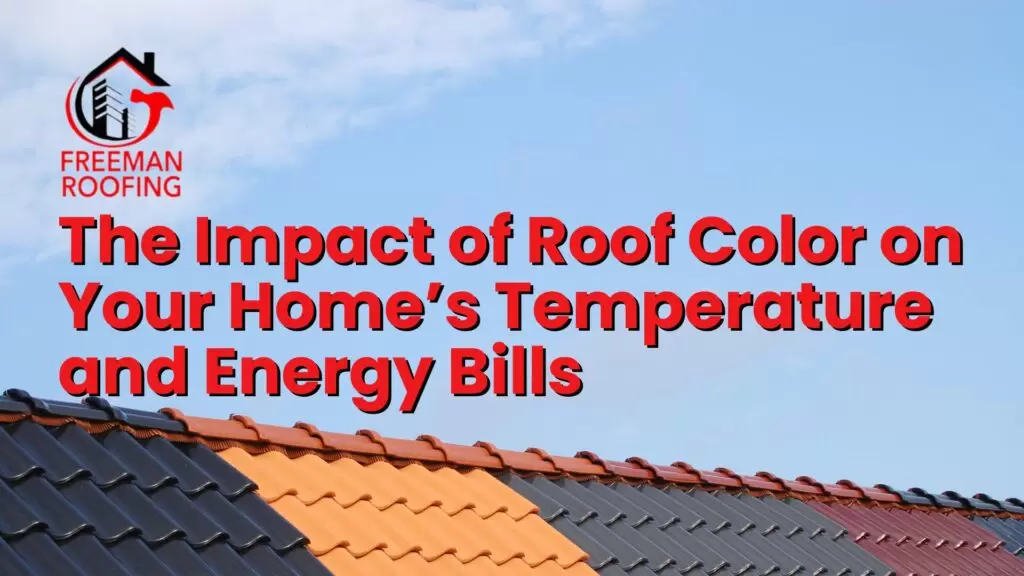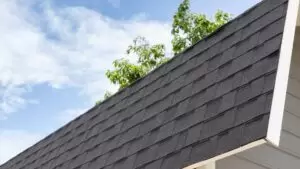The Impact of Roof Color on Your Home’s Temperature and Energy Bills

When it comes to choosing a roof for your home, color may not be the first factor that comes to mind. But did you know that your roof’s color can have a significant effect on your home’s temperature and energy bills? Different colors absorb and reflect sunlight differently, which can impact your indoor comfort and how much you spend on heating and cooling. In this blog, we’ll explore how roof color affects temperature regulation, energy efficiency, and even the lifespan of your roof.
1. How Roof Color Affects Temperature Regulation
Why Color Matters
Roof color directly influences how much sunlight—and therefore heat—is absorbed or reflected by your roof. Darker colors absorb more light, converting it into heat, while lighter colors reflect more sunlight, keeping your home cooler.
Key Insights
- Dark Roofs: Absorb more sunlight, which can make your home warmer during the summer. They are often chosen in colder climates to help maintain warmth.
- Light Roofs: Reflect sunlight, which keeps homes cooler in hot climates and can significantly reduce air conditioning needs.
By understanding this simple principle, homeowners can make a more informed choice based on their climate and comfort needs.
2. Energy Efficiency and Cost Savings

Why Roof Color Impacts Energy Bills
The color of your roof doesn’t just affect the temperature of your attic and upper floors; it can also affect your energy costs. By reflecting or absorbing heat, your roof color can either reduce or increase the workload on your HVAC system, impacting your energy bills.
Key Insights
- Cooling Costs: In warmer climates, a lighter roof color can reduce cooling costs by as much as 10-15% during peak summer months.
- Heating Costs: In colder climates, darker roofs can contribute to lower heating costs as they retain more heat from sunlight.
The right roof color for your climate can add up to significant energy savings over the years, so it’s a choice worth considering for both environmental and financial reasons.
3. Impact on Roof Lifespan
Why Temperature Affects Roof Durability
A roof constantly exposed to intense heat will experience more wear and tear over time. This means that your roof color can indirectly affect its lifespan, depending on how it handles temperature changes.
Key Insights
- Heat and Material Degradation: Dark roofs absorb more heat, which can cause materials to degrade faster, especially in high-temperature climates. Roofing materials like asphalt shingles can expand and contract due to temperature fluctuations, potentially leading to cracks.
- UV Protection: Light-colored roofs can reflect damaging UV rays, which helps protect roofing materials and extend their lifespan in sunny regions.
Homeowners can potentially add years to their roof’s life by selecting a color that suits their local climate and minimizes temperature-related stress on the materials.
4. Roof Color and Environmental Considerations
Why Eco-Friendly Roofing Matters
Eco-conscious homeowners often look for roofing materials and colors that are sustainable and help reduce energy usage. Choosing an energy-efficient roof color is one way to lower your environmental footprint.
Key Insights
- Cool Roofs: These roofs use light colors or reflective coatings to minimize heat absorption, making them an eco-friendly choice that reduces the need for air conditioning. They are especially effective in urban areas, where “heat islands” caused by excessive dark roofs and paved surfaces increase temperatures.
- Reduced Energy Consumption: By lowering your need for air conditioning or heating, you reduce your household’s energy consumption and contribute to lower greenhouse gas emissions.
Choosing a roof color that aligns with energy efficiency standards can be a positive step toward a more sustainable home.
5. Choosing the Right Color Based on Climate

Why Climate Dictates Color Choice
Selecting the optimal roof color depends heavily on your local climate. Homes in different regions will benefit from different roofing colors, depending on whether they experience extreme heat, cold, or a mix of both.
Key Insights
- Hot Climates: Light-colored or “cool” roofs are ideal for regions with high temperatures. These roofs help maintain a cooler indoor environment, even during peak summer months.
- Cold Climates: Dark roofs are beneficial for colder regions, where retaining heat during the winter months can help with indoor comfort and reduce heating bills.
- Moderate Climates: In regions with moderate temperatures, either roof color can work depending on personal preferences, architectural style, and desired energy efficiency.
Consulting with a roofing professional can help you evaluate how different colors and materials perform in your specific location.
Bottom Line
The color of your roof may seem like an aesthetic choice, but it has a real impact on your home’s temperature regulation, energy bills, and overall comfort. By selecting the right roof color based on your climate, you can create a more energy-efficient home, potentially reduce your heating and cooling costs, and extend the life of your roof. Before making a final decision, consider consulting with a roofing expert to determine the best color and material combination for your needs.
